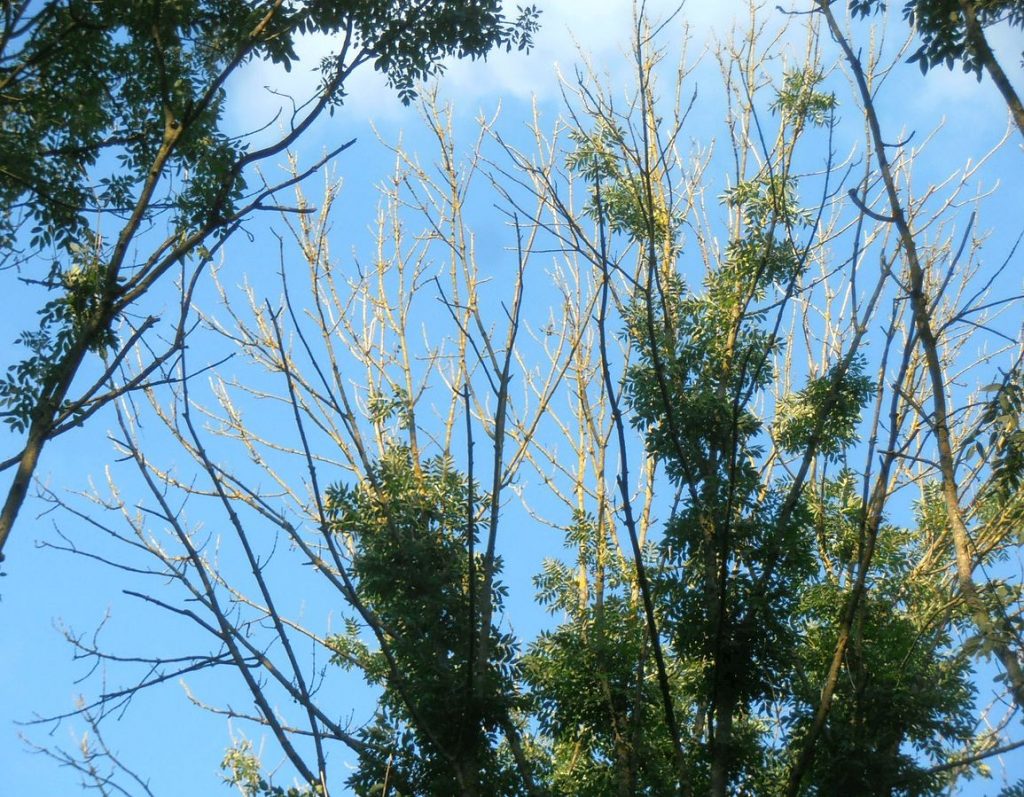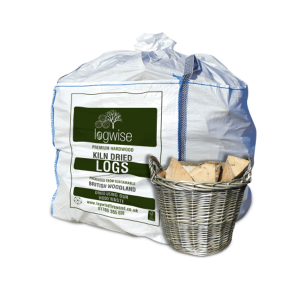
What is ash dieback, and how will it affect UK firewood supply? [Updated for 2022]
When we originally posted this blog in April 2020, the Woodland Trust predicted that “ash dieback will kill up to 95% of ash trees across the UK.”
While we’re happy to report that their estimate has since decreased, this remains a serious disease that is ravaging UK ash populations.

This blog post, updated in August 2022, tells you all you need to know about ash dieback:
- What it is
- How to recognise it
- What’s being done to prevent it
We’ll also explain how it might affect your ash firewood supply in years to come.
What is ash dieback?
Ash dieback is a disease caused by a fungus named Hymenoscyphus fraxineus. It was first formally defined in 2006 and first recorded in the UK in 2012, although scientists were aware of its presence before formal identification.
The Hymenoscyphus fraxineus fungus can live harmlessly in Manchurian ash trees, but when these trees were introduced to Europe, Hymenoscyphus fraxineus made the jump to European ash trees. Because our trees had no resistance, the fungus caused them to become diseased.
Hymenoscyphus fraxineus produces toxins which kill ash trees from within. These toxins are transferred through the xylem – the tissue intended to transport water and minerals through a plant – thereby spreading the disease. Sections of the tree above the infected site gradually die off, hence the term ‘dieback’.
Sadly, once an ash tree is infected, the prognosis isn’t good. There’s a lot of research around cures and prevention, but so far nothing has successfully saved an infected tree (this remains true in 2022, as outlined by Forest Research).
In 2022, councils around the country continue to remove trees due to ash dieback’s continued spread:
- Leicester Council to fell about 250 trees infected with ash dieback – BBC
- West Sussex County Council to continue removing trees affected by ash dieback – The Argus
- Oldest tree in Glasgow’s Botanic Gardens cut down after developing disease – STV News
How to recognise ash dieback
There are a few key diagnostic symptoms when identifying ash dieback, and a comprehensive visual summary of symptoms can be found here:
- A diamond-shaped fissure or legion. This is outwardly-visible dead tissue, and this symptom can be confirmed by checking whether the tree is alive or dead above the legion.
- A mauve tint on exposed bark. Usually ash trees will have a grey tint, but the discolouration is suggestive of ash dieback.
- Black blotches on leaves, with affected leaves wilting.
While most tree surveys in the UK are carried out in autumn and winter months, identifying ash dieback is actually easier in the summer, when trees are in bloom. Infected sections of a blooming ash tree will have fewer leaves – or none at all.
What’s being done to prevent ash dieback
The goal of ash dieback control is to reduce the spread into currently unaffected areas. Tree surveys are a vital tool for this: they aim to build and maintain an understanding of the condition of trees in a given area.
If you spot ash dieback, you can report infected trees using the Forestry Commission’s Tree Alert tool. If you’re not confident in your ability to diagnose ash dieback, a project called Observatree has been designed to help the public develop their tree knowledge.
Trying to reduce transfer via human action is essential as well. Because Hymenoscyphus fraxineus is a fungus, it produces spores that can be carried by the wind, or on the sole of your shoe after walking through fallen leaves of an infected tree.
It’s recommended that you clean your shoes and bike tyres before and after walking or cycling through woodland to reduce the risk of accidentally spreading ash dieback, and also that you refrain from taking any plant materials from one area of countryside to another.
On a larger scale, forestry management bodies are increasing the biodiversity of woodlands to reduce the risk of similar epidemics in the future. When trees of the same type are fewer and farther between, it is more difficult for diseases to spread.
What’s changed since 2020?
We’ve updated this blog post to expand information about symptoms, to provide pictures to help with identification, and to make sure the information remains correct as things develop.
Since we originally posted the article, the prognosis for infected trees remains the same (i.e., there’s no cure) and management is still the preferred strategy (as opposed to prevention).
Here is a timeline of significant events:
- 9th June 2022: The House of Lords debated a question about progress towards developing a variety of ash that is resistant to ash dieback (info here).
- 18th May 2021: The Government published a tree-planting plan which outlines plans to increase the amount of woodland in the UK (info here).
- June 2020: The Tree Council published an informative pamphlet giving tree owners information about the disease and its management (info here).
- June 2019: The Government published a strategy for conserving UK ash trees (info here).
How will ash dieback effect firewood supply?
In our guide to the best firewoods, we described ash as “a firm favourite hardwood for firewood” that “produces good heat, a steady flame, and burns well on its own.”
We include ash in our hardwood logs, as do many firewood suppliers in the UK. As ash dieback continues to spread, ash populations will dwindle.
Gareth Taylor, founder of Logwise Firewood, has this to say about the ash dieback situation:
“Most experts are predicting ash dieback will unfortunately reduce the ash UK’s population permanently and will be widespread. Ash is a native British species and found in hedgerows and parks throughout the country so this is a very sad situation.
With regards to firewood supply, ash is one of the best species for firewood production and is grown and harvested on a commercial basis for this purpose. The immediate effect of the spread of ash dieback is that a lot of these woodlands are being felled to protect the timber stock which means that there is and will be a lot of British ash firewood for sale in the short to medium-term. However, this does mean that there will be a lack of, or very little, ash firewood in the long-term. Woodland managers I have spoken to have suggested other species will be planted to replace the ash stock in the UK.“
Browse our best sellers
-
Kiln dried logs, shipping-dependent
From £155.00 Select options This product has multiple variants. The options may be chosen on the product page -
Kiln dried logs, shipping-dependent
From £155.00 Select options This product has multiple variants. The options may be chosen on the product page
-
From £5.00 Select options This product has multiple variants. The options may be chosen on the product page
-
Eco firelighters, Eco firelighters local, Logwise local
From £3.00 Select options This product has multiple variants. The options may be chosen on the product page














